The topic of Columbus’s cultural connections and parallels with Germany was inspired by a recent trip to Berlin. I visited the German capital in June as study leader with a group from the Art Institute of Chicago, where I worked in the museum education department before coming to Columbus. The cobblestone streets, brick row houses and beer halls of Columbus’ German Village are just one of many reminders of the heritage left by German immigrants who settled in Columbus, once composing up to one-third of the city’s population.
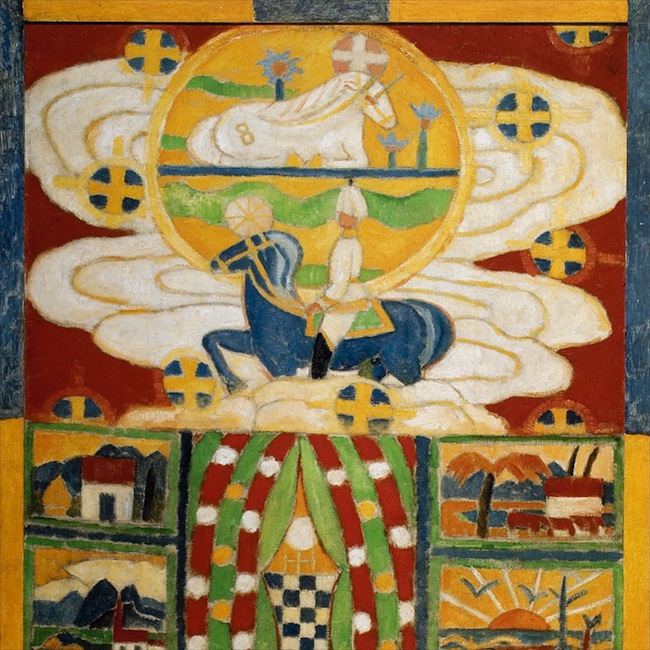
1: Marsden Hartley, Berlin Ante War, 1914, CMA
In the Museum, a masterpiece called Berlin Ante War, (fig. 1) by the early 20th-century American painter Marsden Hartley was painted in Berlin in the era of World War I. Hartley had spent most of his life in New England (and several years in Cleveland in the 1890s) before moving to Berlin at the age of 36. Inspired by the avant-garde Expressionist movement that swept through German art during the first decade of the 20th-century, Hartley produced a series of bold, vigorously painted abstractions that includes Berlin Ante War, a work filled with quasi-mystical imagery related to German military uniforms and insignia, and vignettes of the German homeland. Hartley himself was not from Columbus, but the man who collected his work, Ferdinand Howald was a resident of both Columbus and New York—he divided his time between the two cities. An ardent fan of Hartley and the art of other American modernists, Howald, an industrialist, collected their works in the early decades of the 20th century and left them to the CMA in 1931, the year in which the museum’s historic (Ross) building opened.
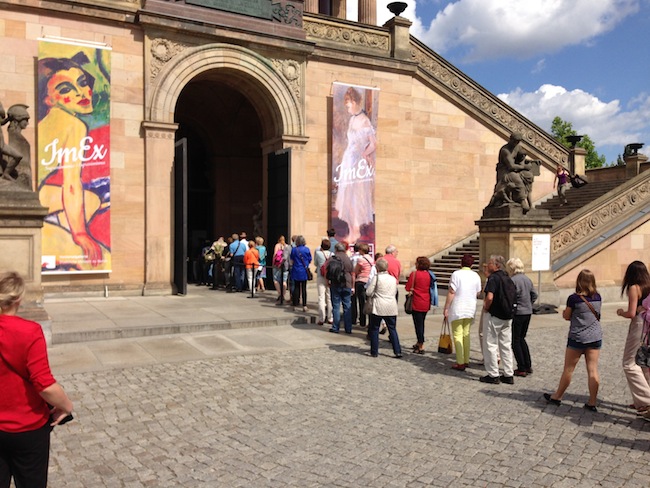
2: Old National Gallery, Berlin
The ties between Germany and the Columbus art world continue to this day, fostered by the international sister cities program that connects Columbus with Dresden. On the walls of the current exhibition of the Greater Columbus Arts Council in fact, are works by two 2015 recipients of artist residencies in Dresden, Andrew McCauley and Robert Metzger. And reciprocally, a Dresden artist, Stefan Hurtig, is this year’s Dresden artist-in-residence in Columbus.
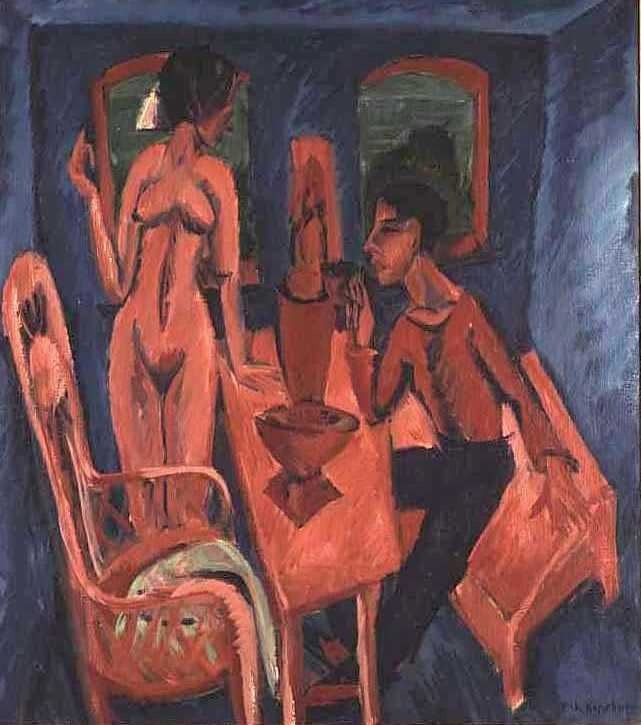
Ernst Ludwig Kirchner, Tower Room, Fehmarn (Self-Portrait with Erna), 1913, CMA
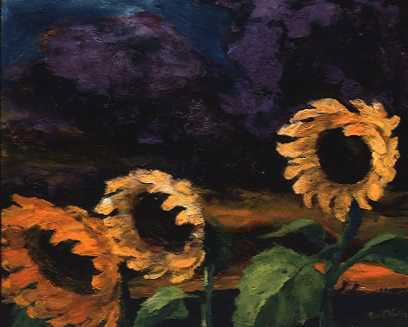
4: Emil Nolde, Sunflowers in the Windstorm, 1943, CMA
I was particularly struck in Berlin this June by the crowds visiting a blockbuster exhibition, Impressionism-Expressionism: Art at a Turning Point (called ImEx for short) in the Old National Gallery of Berlin. Visitors waited in long lines extending out the door of the stately neo-classical museum (fig. 2) to see the art of two movements rarely looked at in tandem: 19th-century Impressionism, featuring loosely brushed, sunlit views of modern life—and Expressionism—purposefully distorted images reflecting the psychic anxieties of a tense era, of which Hartley’s painting is one striking example. In Germany, both of these movements were the subject of intense controversy when first introduced in exhibitions and commercial galleries. CMA’s permanent collection boasts great works by two well-known German Expressionists, Ernst Ludwig Kirchner (fig. 3) and Emile Nolde (fig. 4), both of which, along with Hartley’s canvas, will soon be on view in the reinstalled permanent collection galleries. The latter two works came to the museum in 1991 from another great private collection of Columbus, that of Howard D. and Babette L. Sirak. In Kirchner’s powerful canvas, a self-portrait and a nude female figure populate a claustrophobic composition filled with jagged shapes positioned at tilted angles, while Nolde’s moody still life presents three windswept sunflowers under an ominously dark sky.
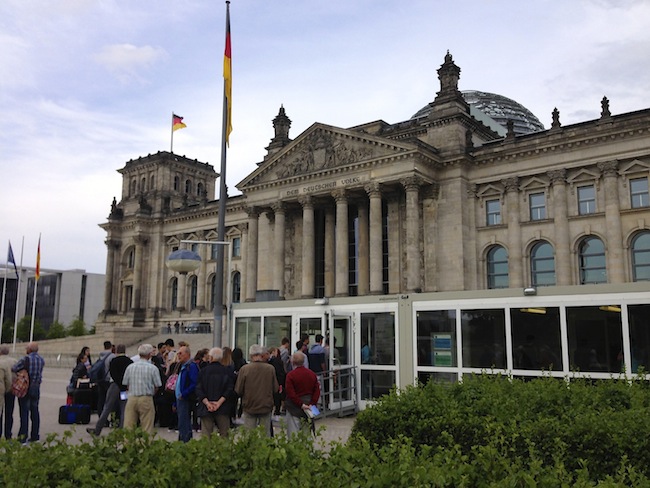
5: Reichstag building, Berlin, 1894
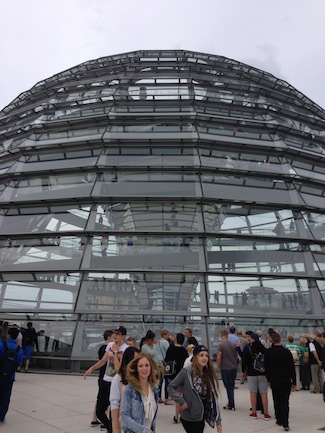
6: Norman Foster, Dome of Reichstag, Berlin, 1999
Following massive destruction in World War II, Berlin’s post-war reconstruction during the Cold War and the increasing acceleration of rebuilding after German reunification in 1990 has resulted in a city filled with bold Postmodern architecture. Sometimes the new jostles with the traditional, for example in the daring 1999 glass dome by Norman Foster added to the 1894 restored neo-baroque Reichstag (Bundestag) building (figs. 5-6). The new wing of the Columbus Museum, opening in October 2015, will also offer a contrast of classical and contemporary architectural modes. The neo-classical façade of the historic Ross building stands beside the rectangular tube of the new wing’s second story, cantilevered over a recessed glass wall of windows on the ground level. The green copper facing seen on the new wing is not an uncommon sight in Berlin, where its distinctive color is used on a number of recent buildings, such as that of the recently completed German Federal Ministry for Education & Research (fig. 7).
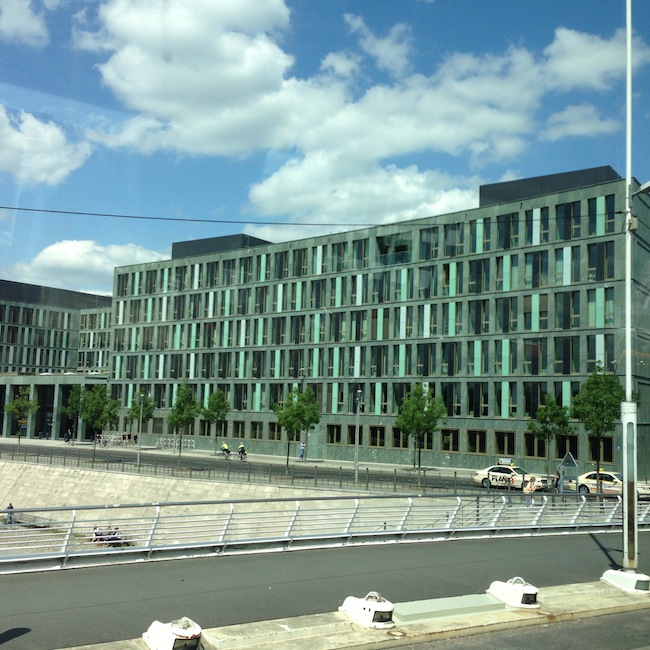
7: Heinle, Wischer & Partner, German Federal Ministry for Education & Research, Administrative Building, Berlin, 2014
Connections and parallels between Germany and Columbus are many. The new wing and reinstalled permanent collection will offer opportunities for new discoveries and fresh perspectives of all kinds, which I hope you will explore and share in the months to come.
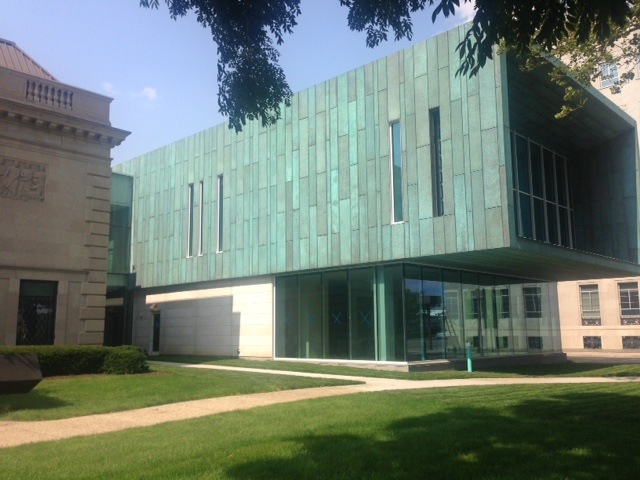
8: Michael Bongiorno, DesignGroup, The New Wing of Columbus Museum of Art opens October 25, 2015 during the Community Grand Opening, presented by PNC Arts Alive
Image key
1 Marsden Hartley, Berlin Ante War, 1914, CMA
2 Old National Gallery, Berlin
3 Ernst Ludwig Kirchner, Tower Room, Fehmarn (Self-Portrait with Erna), 1913, CMA
4 Emil Nolde, Sunflowers in the Windstorm, 1943, CMA
5 Reichstag building, Berlin, 1894
6 Norman Foster, Dome of Reichstag, Berlin, 1999
7 Heinle, Wischer & Partner, German Federal Ministry for Education & Research, Administrative Building, Berlin, 2014
8 Michael Bongiorno, DesignGroup, New Wing, CMA, 2015
-David Stark, Chief Curator at CMA, has a background in museum education that includes positions at the Art Institute of Chicago and the Museum of Art, Rhode Island School of Design. He has taught art history and visual culture at Columbia College Chicago, has lectured on numerous international travel programs with the Art Institute, and his publications on 19th century Belgian art have appeared in American and European journals and catalogs.
